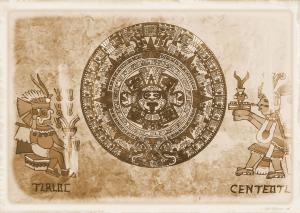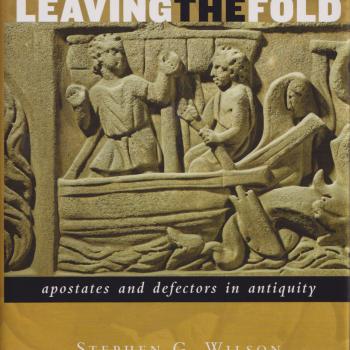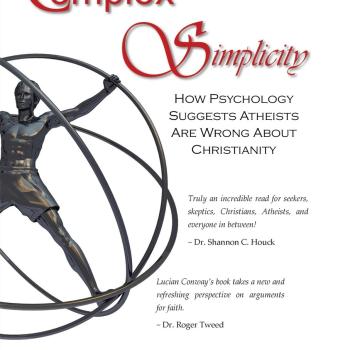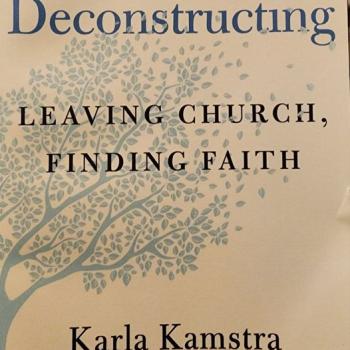
Because of the vast separation in time, location, and culture between the development of Judeo-Christian religion and the various religions of the Incas, Aztecs, Mayans, and other Mesoamerican civilizations, it may seem like a stretch to compare their respective religious approaches to the shameless slaying of human beings. However, the comparison and contrast of each of these people groups may say a lot about the ways in which religions interact with political powers and respond to outsiders which may seem like ideological threats.
This examination of comparative trends may be telling in reference to the past development of civilization and religion, and perhaps a caution to the future as well.
Religion and Government
It is a common understanding in modern Western civilization that religion and government should keep a considerable distance between one another, such that government should never seize authority over religion, while religion should never lend authority to the government. But this modern doctrine is largely in reaction to thousands of years during which religion and government were entangled to a degree that they were practically two heads of the same beast.
In early Egyptian culture, kings were seen as divine beings, and the same became true of Roman kings once Rome traded a republic for an empire. When these god-kings made proclamations, they were at once both civil law and divine decree.
A step down from god-kings were priest-kings. In these cases, the king was not simply the arbiter of law, but the intercessor with the gods. With the exception of the slight ego-boost of being worshiped as a god, being a priest-king held the same power and authority.
However, it was more frequently the case that the government and the religion were separate institutions which stood in a symbiotic relationship. The government protected and funded the religion, while the religion lent its divine support to the government. Consequently, being a pious worshiper required one to be a loyal subject.
Mesoamerican Sacrifices
The relationship of the Aztec monarchy with the Aztec religion may be best characterized as a partnership between religion and government. Mesoamericans had state-gods, meaning that different states had their own all-powerful deities which protected or poured out wrath upon them respectively. As with most tribal religions, these deities were set at odds with one another such that different states saw the gods warring together whenever the states warred with each other.
Human sacrifice had a long history in Mesoamerica and was not unique to the Aztecs. But human sacrifice, while honoring and appeasing the gods, had an important political purpose as well. When war was performed on surrounding tribal enemies, those enemies were captured and sacrificed to the gods. This not only appeased the gods, but it brought disgrace and fear on their enemies, and reduced the size of the enemy population. The religion was just a means to an end for the government.
The Hebrews and Witchcraft
Mosaic Law as reflected in the Torah (the first five books of the Bible) is structured around a distinction being made between the Jews and all of the surrounding nations. Jews were given meticulous instructions on how to groom themselves, set up their houses, prepare their food, and wear their clothing such that they looked and behaved very differently than any of the surrounding nations. If the laws were kept as written, a Jew would be easy to pick out of a crowd because their appearance and behavior were extremely characteristic.
This law of distinction extended beyond simple appearance and behavior into religious ritual. Jewish rituals looked different than all other Ancient Near Eastern cultures – including the forbidding of temple prostitution, divination (fortune telling), astrology, and human sacrifice – all fairly common practices in other Ancient Near Eastern cultures.
Mosaic law stressed that the Jews were never, under any circumstances, to take on the religious practices of the surrounding nations. And this is one of the things that distinguishes the witch-hunt from the sacrifice of political enemies. Under Jewish law, a witch was not a foreigner – it was a Jewish citizen who had adopted foreign religious practices. Any Jew who was found practicing divination, astrology, religious prostitution, or other occultic practices borrowed from other nations was to be put to death, preserving the Jewish distinction by both fear and elimination.
Witch Hunts in the Bible
In the 1950s, America saw the rise of McCarthyism. In this era, the fear of Communism had peaked, and various political leaders began to accuse one another of being communist spies, sympathizers, or ideologues; the mere accusation of which was enough to ruin the political career of the accused. This carried on the millennia-old practice of the “witch hunt”: accusing someone within one’s camp or circle of secretly being one of the enemy. This was an extension and expansion of what is seen in early Mosiac law: it is taboo to take on the practices of the enemy. In this instance, it isn’t so much a threat of overt revolution or mutiny, but rather the fear of gradually becoming the enemy. And as with any religious tool which gave permission to the government to expand its domain, this taboo against the subtle infestation of witchcraft (metaphorical or actual) has been seized repeatedly throughout history by governments eager to eliminate real or imagined threats to its authority: dressing up autocracy as piety.
One can see this as early on as the first king of Israel: King Saul. Saul was not known for his strict adherence to the Mosaic Law – violating it more than upholding it – but he was suspiciously zealous in his pursuit and execution of witches. The books of Samuel do not give much detail, but it’s easy to imagine why a reputedly paranoid and neurotic king like Saul would be interested in finding and killing witches.
After the reign of Saul, one does not see much reference to witches in the remainder of the Old Testament, and the New Testament approach to witchcraft takes a surprising turn. One sees two specific instances of witchcraft in the New Testament, both in the book of Acts. In the first of these, a demon-possessed girl who was being used by a local occultist for fortune-telling is exorcised by Paul, and is converted as a result. Later in the book, a sorcerer by the name of Simon grows jealous of the miraculous acts of Peter and tries to purchase some of that power. After interacting with Peter, he eventually renounces his cultic practices and becomes a Christian.
In the New Testament witches aren’t hunted or persecuted, they are converted.
Witch Hunts in Christian History
In early Christian history the witch hunts were conducted against Christians by the Roman empire. Suspected Christians were asked to bow to the effigies of Caesar. Their refusal to do so spelled out their death – often in gladiatorial arenas. If one is looking for a parallel between witch hunting and human sacrifice, this is one: Aztecs frequently used arena fights as a means of human sacrifice for the same reason Romans did. It displayed their superiority to the victim and shamed the enemy by proxy.
As Christianity gradually became the Roman Empire, however, the story shifted. Thereafter, witch hunts began to resemble those of the Old Testament lore. The Roman Empire continued to expand into the pagan territories of Scandinavia and Brittany. Here, the intersection of pagans and Christians was the breeding ground for an ongoing problem: syncretism. In these instances, pagans and Christians alike began to adopt and blend religious practices in much the same way one sees in the Old Testament infiltration of Canaan. This blending of practices was seen as taboo by pious Christians and gave rise to the contemporary version of witchcraft. In these early instances, witchcraft was a cultural taboo and was grounds for expulsion or shaming, but wasn’t the subject of lethal force. However, when the governing authorities saw these accusations of witchcraft as an opportunity to eliminate political threats, they began to leverage them as an excuse for judicial execution.
This is most evident in the extensive records of the famous Salam Witch Trials. New England Colonial Puritanism had with it an aura of the arcane and the occult. Stories of people slipping out into the woods and performing distinctly non-Christian rituals abound from that time period. This is possibly because – just like the expansion of Christianity into early Scandinavia – Christianity was encountering spiritualistic ideas in its interaction with natives and with African slaves.
This is where the record of the Salam trials begins: a few local girls were allegedly going off in the woods and doing God-knows-what. When one of the girls began to have “episodes” (possibly seizures), accusations of witchcraft flew around and the African maid of the household was blamed for indoctrinating the girls with her foreign practices.
This event kicked off a storm of accusations, trials, and occasional executions during which the political opponents of the governing authority were conveniently found guilty. This, in many ways, resembled the McCarthyism of the 1950s.
Conclusion
The use of religious power as a tool for political advancement is as old as recorded history. However, there is a slight distinction between the sacrifice or humiliation of one’s enemies on religious grounds and the accusations against people within one’s own camp of being agents of an existential evil. The “witch hunt” isn’t particularly specific to Christianity, and isn’t always religious in nature. It just reflects the paranoia that governing authorities have of being overthrown by a creeping ideological threat, and painting this internal threat as the avatar of arcane evil. Witch hunts are still happening in one sense or another today, and because human beings are who they are, probably always will be.













